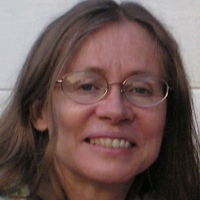Papers by Michel Ghantous
Journal of Superconductivity and Novel Magnetism, 2015
Journal of Superconductivity and Novel Magnetism, 2014
We propose a novel supercurrent generation mechanism in the cuprate. The supercurrent is generate... more We propose a novel supercurrent generation mechanism in the cuprate. The supercurrent is generated as a collection of the spin-vortex-induced loop currents created with the doped holes at their centers. A quartet of the spinvortices with width 4a (a is the lattice constant of the CuO 2 plane) is the stable unit of the spin-vortices, and an assembly of them creates a network channel for the supercurrent flow. A macroscopic supercurrent flows when they cover the whole CuO 2 plane. The Ginzburg-Landau macroscopic wave function formalism is also derived from the present supercurrent generation mechanism.
Solid State Communications, 1979
that are ascribed to the motion of bound interstitials.
Journal of Physics and Chemistry of Solids, 1980
that are ascribed to the motion of bound interstitials.

We consider a scientific mystery which is of central importance in treating the most rapidly emer... more We consider a scientific mystery which is of central importance in treating the most rapidly emerging national and global health threat: type 2 diabetes mellitus. The mystery involves a surprising effect of certain bariatric surgeries, and specifically Roux-en-Y gastric bypass (RYGB), a procedure which bypasses most of the stomach and upper intestine. An unanticipated result is that RYGB is usually found to contribute within only a few days to glucose homeostasis. This means the surgery can immediately cure patients even before they start losing weight. We are investigating this wondrous biochemical response with a quantitative model which includes the most important mechanisms. One of the major contributors is glucagon-like peptide 1 (GLP-1), an incretin whose concentration is found to increase by a large amount right after the RYGB surgical procedure. However, our results, in conjunction with the experimental and medical data, indicate that other substances must also contribute. I...

The impressive achievements of biomedical science have come mostly from experimental research wit... more The impressive achievements of biomedical science have come mostly from experimental research with human subjects, animal models, and sophisticated laboratory techniques. Additionally, theoretical chemistry has been a major aid in designing new drugs. Here we introduce a method which is similar to others already well known in theoretical systems biology, but which specifically addresses biochemical changes as the human body responds to medical interventions. It is common in systems biology to use first-order differential equations to model the time evolution of various chemical concentrations, and we as physicists can make a significant impact through designing realistic models and then solving the resulting equations. Biomedical research is rapidly advancing, and the technique presented in this talk can be applied in arbitrarily large models containing tens, hundreds, or even thousands of interacting species, to determine what beneficial effects and side effects may result from pha...
Advances in Quantum Chemistry, 2003
In the FranckCondon approximation, the major contribution to the vibronic second-order JahnTell... more In the FranckCondon approximation, the major contribution to the vibronic second-order JahnTeller (JT) reduction factors (RFs) originates from vertical virtual transitions between the BornOppenheimer electronic ground and excited states associated with the ...
Qatar Foundation Annual Research Forum Proceedings, 2012
Journal of Physics: Condensed Matter, 2005
Page 1. Accurate calculations of second-order vibronic reduction factors for C60 ions This articl... more Page 1. Accurate calculations of second-order vibronic reduction factors for C60 ions This article has been downloaded from IOPscience. Please scroll down to see the full text article. 2005 J. Phys.: Condens. Matter 17 4779 (http://iopscience.iop.org/0953-8984/17/30/005) ...
Journal of Physics: Condensed Matter, 2002
The Franck-Condon (FC) approximation is used to obtain analytical values for the second-order fac... more The Franck-Condon (FC) approximation is used to obtain analytical values for the second-order factors describing vibronic reduction for the case of the strongly coupled icosahedral T1u⊗hg Jahn-Teller (JT) system in which an electronic triplet ground state is coupled to vibrations of fivefold degeneracy. This is believed to be applicable to the ground state of the C60- ion and so the
Journal of Physics: Condensed Matter, 2004
Page 1. Second-order vibronic reduction factors for orbital triplet JahnTeller systems in cubic ... more Page 1. Second-order vibronic reduction factors for orbital triplet JahnTeller systems in cubic and icosahedral symmetry This article has been downloaded from IOPscience. Please scroll down to see the full text article. 2004 J. Phys.: Condens. Matter 16 5309 ...

The European Physical Journal B, 2013
A model calculation is presented for the spin wave scattering and coherent transport at the ferri... more A model calculation is presented for the spin wave scattering and coherent transport at the ferrimagnetically ordered cobalt-gadolinium alloy nanojunction between cobalt leads. The structural model for the amorphous alloy nanojunction [Co 1/2 Gd 1/2 ]3 is considered as an ordered alloy hcp structure of three (0001) atomic planes between the leads. To analyze the spin dynamics and spin wave scattering at the nanojunction boundary, the phase field matching method (PFMT) is implemented over the ground state of the system, in the Heisenberg Hamiltonian representation. The coherent reflection and transmission probabilities of spin waves from the cobalt leads incident onto the nanojunction boundary are calculated, and numerical results are presented for the coherent SW transport across the nanojunction over the entire range of their frequencies. The results are especially valid in the interval between nanometric SW wavelengths greater than the nanojunction width and macroscopic wavelengths. They demonstrate in particular, the possibility of the resonance assisted maxima for the SW transmission spectra owing to the interactions between the incident spin waves and the localized spin resonances on the nanojunction. This effect is general and may be observed at different characteristic frequencies and corresponding incident angles.

Biophysical Journal, 2013
phase separation due to differentiated cell-cell adhesion. Various nontrivial emerging patterns r... more phase separation due to differentiated cell-cell adhesion. Various nontrivial emerging patterns resembling observed tumor morphology were identified over the parameter space of our model. However, the previous development and analysis of our model have been implicitly based on the assumption of a homogeneous microenvironmental background and unrestricted boundaries. Most clinically relevant tumors are constrained by particular organ tissue structures that may co-evolve with the progressing tumors and have profound impact on tumor-microenvironment interactions. Here we adopt a recently developed diffuse-domain approach, utilizing the Cahn-Hilliard equation framework we have previously established, to adapt partial-differential-equation models of tumor growth to a co-evolving tissue geometry. We will demonstrate this approach by modeling the growth of lymphoma within a lymph node and ductal carcinoma in situ within mammary ducts.
Theoretical Biology and Medical Modelling, 2013
The most common bariatric surgery, Roux-en-Y gastric bypass, leads to glycemia normalization in m... more The most common bariatric surgery, Roux-en-Y gastric bypass, leads to glycemia normalization in most patients long before there is any appreciable weight loss. This effect is too large to be attributed purely to caloric restriction, so a number of other mechanisms have been proposed. The most popular hypothesis is enhanced production of an incretin, active glucagon-like peptide-1 (GLP-1), in the lower intestine. We therefore set out to test this hypothesis with a model which is simple enough to be robust and credible.

Surface Science, 2002
A method is presented for the calculation of the energies of spin modes of magnetic surface clust... more A method is presented for the calculation of the energies of spin modes of magnetic surface clusters. The cluster is considered to be supported on a magnetically ordered substrate, such that the spins of the cluster and the substrate atoms interact via magnetic exchange. No electronic effects are considered. The analytical approach solves for the three dimensional crystal spin field in the bulk and the surface domains around the cluster, that arises owing to the breakdown of magnetic translation symmetry for the system. In particular we consider here a five-atom planar cluster on the surface of a ferromagnetic simple cubic lattice, the spin order being in the direction normal to surface boundary. The method is applied to calculate the spin mode energies of a planar cluster of five Gd atoms on an Fe(1 0 0) surface where the Fe substrate is approximated as a simple cubic lattice. These spin mode energies are compared with those of the spin modes of the free cluster. This analytic approach is applicable to different surface cluster configurations for the same underlying substrate cubic symmetry in the present model, which underlies the general character of the approach. Ó

Nanoscale research letters, 2012
Unknown quantum electronic conductance across nanojunctions made of silicon-doped carbon wires be... more Unknown quantum electronic conductance across nanojunctions made of silicon-doped carbon wires between carbon leads is investigated. This is done by an appropriate generalization of the phase field matching theory for the multi-scattering processes of electronic excitations at the nanojunction and the use of the tight-binding method. Our calculations of the electronic band structures for carbon, silicon, and diatomic silicon carbide are matched with the available corresponding density functional theory results to optimize the required tight-binding parameters. Silicon and carbon atoms are treated on the same footing by characterizing each with their corresponding orbitals. Several types of nanojunctions are analyzed to sample their behavior under different atomic configurations. We calculate for each nanojunction the individual contributions to the quantum conductance for the propagating σ , π, and σ * electron incidents from the carbon leads. The calculated results show a number of remarkable features, which include the influence of the ordered periodic configurations of silicon-carbon pairs and the suppression of quantum conductance due to minimum substitutional disorder and artificially organized symmetry on these nanojunctions. Our results also demonstrate that the phase field matching theory is an efficient tool to treat the quantum conductance of complex molecular nanojunctions.

Modern Applied Science, 2013
An Ising effective field theory (EFT) is presented to calculate the characteristic magnetic prope... more An Ising effective field theory (EFT) is presented to calculate the characteristic magnetic properties of a 2D nano-island presenting an out-of-plane magnetization, and subject to an applied in-plane transverse magnetic field. A non-diagonal Ising Hamiltonian with nearest neighbor exchange, single-atom magnetic anisotropy, and a transverse Zeeman term, defines the ground state of the system. We investigate the effects due to the transverse field acting on the magnetic order, in conjunction with those due to the reduced dimensionalities of the core and periphery domains of the nano-island. The choice of a model spin S ≥ 1 for the atoms permits the analysis of spin fluctuations via the single-atom spin correlations. A numerical method is developed to avoid approximations inherent to analytical treatments of the non-diagonal Hamiltonian for spin S ≥ 1 systems. It is applied successfully for nano-island spin S = 1 and 2 systems, generating accurate EFT results. Detailed computations are made for the characteristic magnetic properties of the nano-island over its hexagonal lattice, and applied numerically to calculate the properties of the 2D Co nano-island on an fcc(111) surface. It is shown how the transverse magnetic field perturbs the magnetic order, generating spin correlations and magnetizations for the core and periphery domains that are fundamentally different along the longitudinal and transverse directions. The transverse field drives the system Curie temperature to lower values with increasing strength. The isothermal susceptibilities are shown to be exchange dominated along the out-of-plane direction and quasi-paramagnetic in the inplane. A characteristic thermodynamic function that scales directly with the spin and the transverse field is derived for the correlations of the longitudinal and transverse spin components on the nano-island atomic sites.

Journal of Magnetism and Magnetic Materials, 2002
A method for the calculation of the energies of spin modes of surface magnetic clusters on a magn... more A method for the calculation of the energies of spin modes of surface magnetic clusters on a magnetic surface, using broken translation symmetry in three dimensions (3D), is employed to determine the spin mode energies for a variety of planar clusters. The cluster is considered to be supported on a magnetically ordered substrate such that the localised spins of the cluster and the substrate interact via magnetic exchange. No electronic effects are considered. The analytical approach solves for the 3D evanescent crystal spin field in the bulk and the surface domains around the cluster. This spin field arises owing to the breakdown of magnetic translation symmetry caused by the surface cluster. The analytical approach can be applied to any cluster configuration, underlying the general character of the calculation. In particular, we consider here a 4-, 5-, and 9-atoms planar clusters supported on the surface of a ferromagnetic simple cubic lattice, the spin order being in the direction normal to surface boundary. The method is applied to calculate the spin mode energies of these planar clusters consisting of Gd atoms interacting via Anti-ferromagnetic exchange with an Fe(1 0 0) surface. These results are compared with the calculated energies of the spin modes of the free clusters, and also with those for the same planar clusters when the cluster-substrate exchange is considered hypothetically ferromagnetic. r

Journal of Magnetism and Magnetic Materials, 2014
Calculations are presented for the scattering and ballistic transport of spin waves (SW) incident... more Calculations are presented for the scattering and ballistic transport of spin waves (SW) incident from cobalt leads, on ultrathin ferrimagnetic cobalt-gadolinium ‥Co½Co ð1 À cÞ Gd ðcÞ ℓ ½Co‥ nanojunction systems. The nanojunction ½Co ð1 À cÞ Gd ðcÞ ℓ itself is a randomly disordered alloy of thickness ℓ hcp lattice planes between matching hcp planes of the Co leads, at known stable concentrations c r 0:5 for this alloy system. To compute the spin dynamics, and the SW scattering and ballistic transport, this alloy nanojunction is modeled in the virtual crystal approximation (VCA), valid in particular at the length scale of the nanojunction for submicroscopic SW wavelengths. The phase field matching theory (PFMT) is applied to compute the localized and resonant magnons on the nanojunction. These magnons, characteristic of the embedded nanostructure, propagate in its symmetry plane with spin precession amplitudes that decay or match the spin wave states in the semi-infinite leads. The eigenvectors of these magnon modes are calculated for certain cases to illustrate the spin precession configurations on the nanojunction. The VCA-PFMT approach is also used to calculate the reflection and transmission spectra for the spin waves incident from the Co leads on the nanojunction. The results demonstrate resonance assisted maxima for the ballistic SW transmission spectra due to interactions between the incident spin waves and the nanojunction magnon modes. These properties are general for variable nanojunction thicknesses and alloy stable concentrations c r 0:5. In particular, the positions of the resonance assisted maxima of spin wave transmission can be modified with nanojunction thickness and alloy concentration.
Journal of Applied Physics, 2013










Uploads
Papers by Michel Ghantous